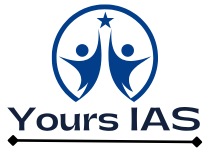Blog
Major Dynasties of Early Medieval Period
- September 14, 2024
- Posted by: Beauty Kumari
- Category: Uncategorized
Introduction
After Harshavardhana’s death, India experienced significant changes, known as the twilight of ancient India. Pataliputra lost prominence as a symbol of sovereignty, and Kanyakubja became the symbol of India’s sovereignty. Three Indian dynasties, Palas, Prathiharas, and Rashtrakutas, engaged in triangular warfare for control of Kanyakubja. Decentralization reached its peak, leading to the emergence of Indian feudalism. Regional powers emerged, and political unity was shattered.
The Pratihara
- Prithvirajraso, written by Chandbadrai, is the first major source for Rajput history, tracing their origins to a fire sacrifice at Mt. Abu.
- It is considered the first book in Hindi.
- Other notable sources include “Annals of Rajputana” by Colonel James Todd, “Kathasaritha Sagara” by Somadeva Suri, and Pampa’s book on Gujara.
Political History
- The Prathiharas, originating from Laxman, ruled Rajasthan and Gujrat region.
- They acted as bulwarks against Islamic invaders, with Nagabhatta-1 being the most prominent king who clashed with Rashtrakuta king Dhruva.
- Vatsaraja followed, defeating Dharmapala but losing to Dhruv.
- Mihirbhoj, the greatest among Prathiharas, ruled for 46 years and was mentioned by Arab travelers.
- Rajyapala was defeated by Krishna 3 and Ghazni Mohammed.
- From 1000 AD, Prathiharas became weak due to internal conflicts and feudal lords, leading to Rajput fragmentation.
Architecture:
Gurjara-Pratihara era architecture features sculptures and carved panels, originating from Maru-Gujara style. Notable examples include Bateshwar Hindu temple complex dedicated to Shiva, Vishnu, and Shakti, and Baroli temple complex.
Pala dynasty
Pala Dynasty Overview
- The Pala dynasty ruled from 8th to 12th century CE in Bihar and Bengal.
- The first prominent king was Sashanka, who ruled between 590 and 625 CE.
- Gopala I was chosen as ruler in 750 CE, succeeded by Dharmapala (770–815 CE), who established vikramashila, Jagaddella, and patronised Harisbhadra, a Buddhist writer.
Dharmapala’s son Devapala extended Pala control eastwards to Kamarupa (Assam), defeating Amoghavarsha, the Rashtrakuta ruler. - The dynasty was revived by Mahipala I, son of Vigramapala II, who checked the advancement of Cholas beyond the Ganges.
Important Rulers
- Gopala, Dharmapala, and Mahapala were significant patrons of Mahayana Buddhism.
The Palas constructed various mahaviharas, stupas, chaityas, temples, and forts, with most architecture being religious.
Painting
- The earliest examples of miniature painting in India exist in the form of illustrations to religious texts on Buddhism executed under the Palas.
- Pala painting is characterized by sinuous lines, delicate and nervous lines, sensuous elegance, linear and decorative accent, and subdued tones of color.
Pala Sculpture
- The Gupta tradition of sculptural art attained a new height under the patronage of Pala rulers.
- The art incorporated local characteristics in Bengal under the Palas and continued until the end of the 12th century.
- The main features of pala sculptures are their free flowing movement, carved out of grayish or white spotted sandstone.
Reasons for the sudden ending of Pala art
- The destruction of Buddhist monasteries by Muslim invaders in the first half of the 13th century led to the sudden end of Pala art.
- Rebellions in Kamarupa during Ramapala’s son Kumarapala’s reign further reinforced existing art traditions.
The Senas: Historical Overview and Religious Influence
Political History:
- Senas ruled from Bengal in the 11th and 12th centuries.
- Originated from the south Indian region of Karnataka.
- Vijayasena, the founder, expelled Madanpala and initiated Sena rule.
- Ballala Sena introduced Kulinism, followed by Lakshamanasena.
- Lakshmana Sena was the greatest of the Sena dynasty.
- Towards the end of his reign, he became weak and disintegrated.
Religion:
- Sena rule is linked to the emergence of orthodox Hinduism in a Hindu-Buddhist society.
- Buddhist migration to neighbouring countries is believed to have started during this period.
- Bhaktiyar Khalji plundered many bhuddist universities.
Literature:
- Sena rulers were patrons of literature, witnessing major growth in Bengali and Sanskrit literature.
- Notable figures include Jayadeva, Sarana, Umapathi, Dhoyi, and Govardhana.
Architecture:
- The architectural style in the Sena dynasty continued the style of PALAS.
Rashtrakuta Dynasty Overview
Political History:
- Rashtrakutas were feudatories of the Western Chalukyas of Vatapi.
- Dhantidurga, founder of Rashtrakuta dynasty, defeated Chalukyas of Badami.
- Krishna 1 succeeded Dhantidurga, who constructed Kailasa temple in Ellora.
- Krishna 2 succeeded Dhruva, who defeated Pallavas, Eastern Chalukyas, Palas and Prathiharas.
- Govinda III succeeded Dhuva, who waged war against all adjacent kingdoms and was victorious.
- Rashtrakuta empire extended from Himalayas to Kanyakumari in south and Saurashtra in the west to west Bengal in the east.
Amoghavarsha:
- Govinda III was succeeded by his son Amoghavarsha (814–880 CE).
- Amoghavarsha was a patron of literature and patronized Digambara acharya Jinasena, Sanskrit grammarian Sakatayana and the mathematician Mahaviracharya.
- Amoghavarsha was a great poet and his Kavirajamarga is the earliest Kannada work on poetics.
Religion:
- Rashtrakuta rulers had great religious tolerance.
- The worship of Shiva and Vishnu was popular during their reign.
- Jainism was patronized by later rulers like Amoghavarsha.
Literature:
- Rashtrakuta rulers were great patrons of learning.
- They made great progress in Kannada and Sanskrit literature.
- They wrote the three gems of ancient Kannada literature –Pampa, Ranna, Ponna.
Art and Architecture:
- The Rashtrakutas made splendid contributions to Indian art.
- They built structural temples, cave temples, and Basadis.
- Ellora, Ajantha, and Elephanta are centers of their art.
